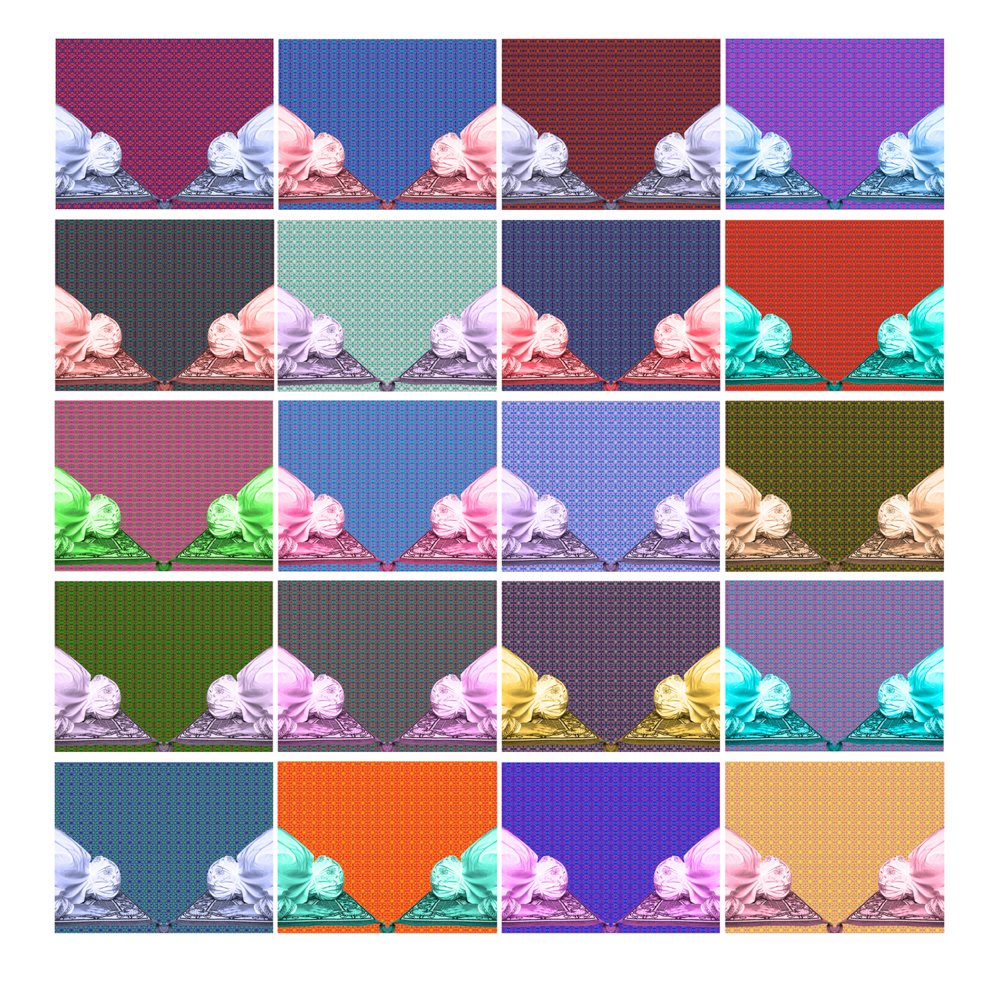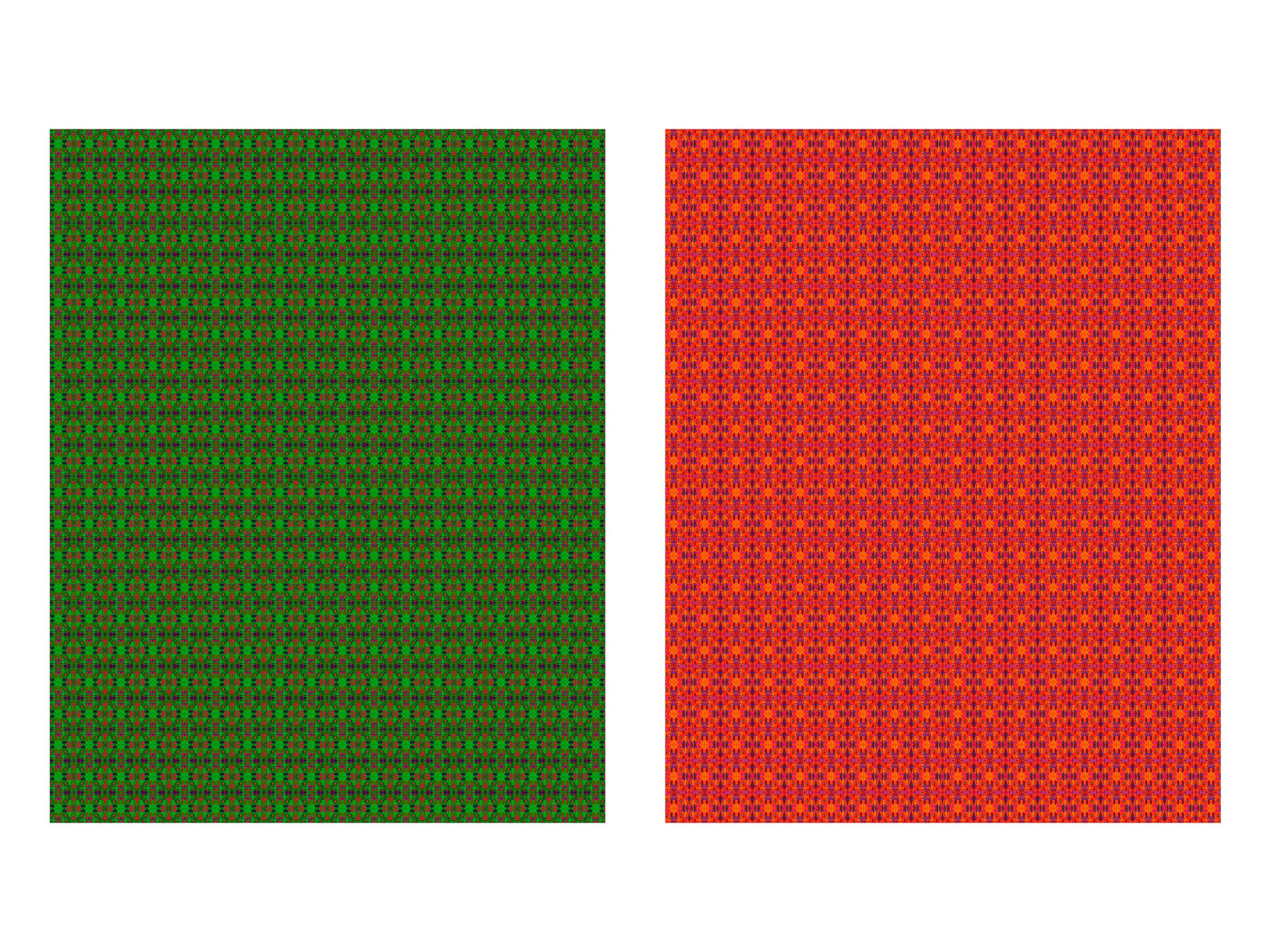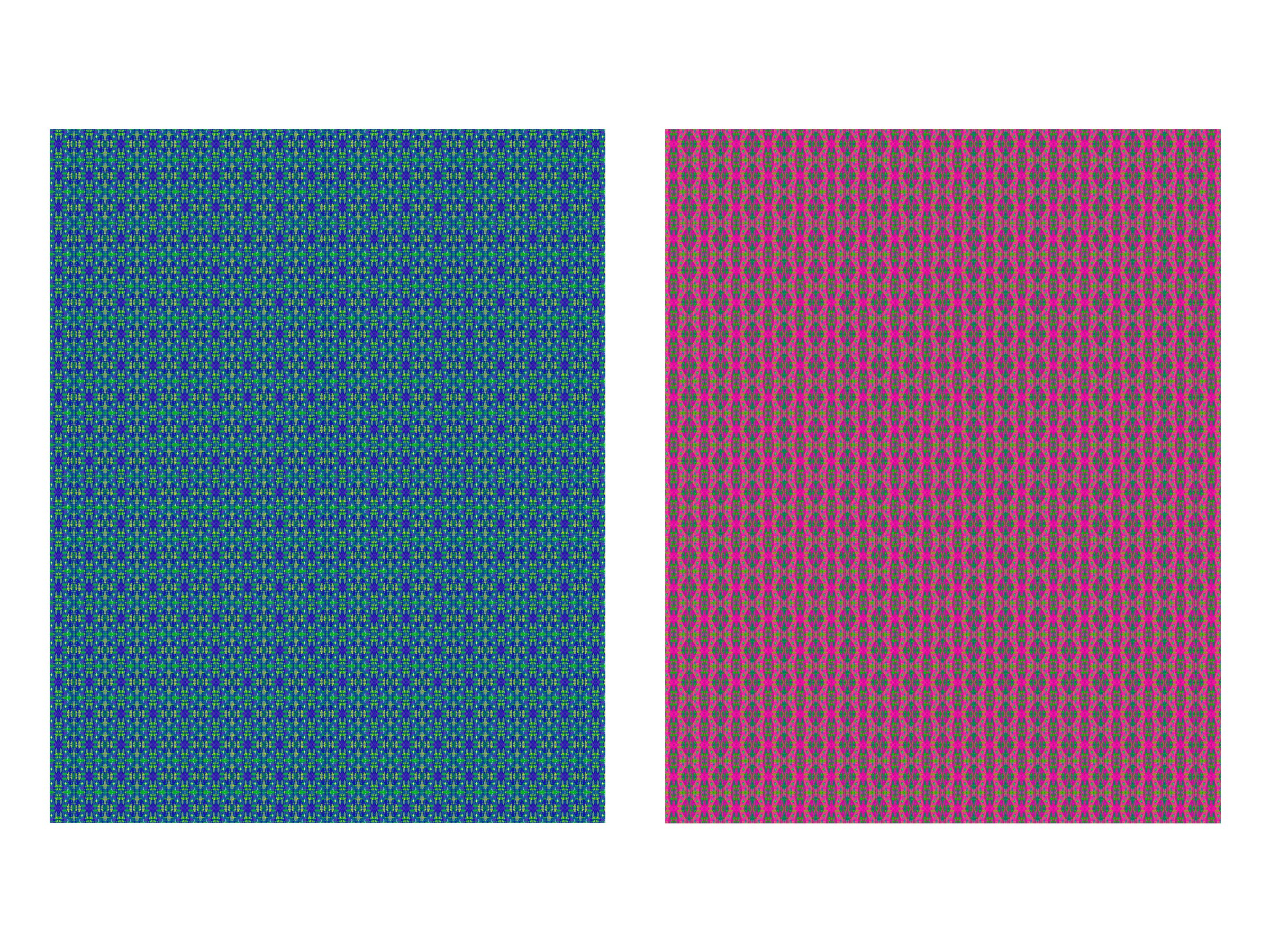inter-subjectivity: nineteenth, mixed media, (2020)
the gaze upon gendered islamophobia
Prayer Rug, digital textile pattern, mixed media, (2020)
"The Gaze Upon Gendered Islamophobia" (2018 - ongoing) is the visual-research that delves into the complex discourse surrounding the wearing of head-coverings by Muslim women, a topic steeped in controversy, debate, harassment, and bans in many parts of the Western hemisphere. As a visual artist focused on anthropological research, my body of work has evolved as a response to the portrayal of Muslim women through three distinct stages: the concept of modesty within Islam, the objective reality versus subjective beliefs, and the intention behind identity erasure.
The veiling bans, manifested as written laws that extend beyond the confines of political debates, have sparked identity erasure for women who have chosen to display their devotion through attire such as robes, veils, and headdresses in “foreign lands”. It is crucial to recognize that, according to the Pew Research Center, more countries currently restrict women's ability to wear religious symbols or attire than enforce dress codes. The veil, once a symbol of devotion, has become weaponized as a perceived threat, subject to enforced regulations or outright bans.
However, amidst these debates, it is important for our societies to reflect upon a critical question: What does the veiled woman, who consciously wears the veil, truly desire to express through her attire? And when will societies start questioning the desires and intentions of veiled women who choose to wear the veil, rather than perceiving it as an enforced or banned object symbolizing a threat? By unpacking the layers of gendered Islamophobia and challenging preconceived notions, "The Gaze Upon Gendered Islamophobia" aims to encourage a deeper understanding of the veiled woman's agency, aspirations, and personal journey, beyond the confines of societal stigmatization.
Through visual storytelling and anthropological inquiry, this body of work seeks to shed light on the multifaceted experiences that underlie the choice to wear the veil. By amplifying the perspectives often overlooked, the project challenges the dominant narratives surrounding Muslim women, fostering empathy, understanding, and dialogue in the face of gendered Islamophobia.
Artwork: 24:31, (2018), the photographed devotee, of Saudi Arabian origin, is adorned in a blue floral Jilbab as she engages in Salah, the Islamic prayer. Positioned on her vibrant green prayer rug, she devoutly faces the Kaaba, the holiest site in Islam.
The concept of modesty in Islam
The concept of modesty in Islam: is multifaceted, with various interpretations stemming from a shared source. One such interpretation is derived from Surah 24, An-Nur, Ayat 31 in the Quran, which articulates the perspective on modesty for Muslim women. This aspect of modesty has engendered contentious discussions both within and outside the Muslim community. It is important to note that interpretations are not solely influenced by the reader or transmitter of the message but also by the receiver. The artwork presented does not advocate for any specific viewpoint on how the subject should be perceived. Instead, it documents the Sujud, the act of prostration to God, in the direction of the Qiblah, offering a visual exploration without taking a stance on the interpretation of modesty in Muslim women.




inter-subjectivity: two, mixed media, (2020)
Inter-subjectivity
Objective reality versus subjective beliefs: Inter-subjectivity represents the intersection between objective reality and subjective beliefs, examining the ability of a concept to be perceived and communicated among diverse individuals. Within this context, we explore the experiences of Muslim women engaging in the act of prayer, known as Salah. While this practice is shared among multiple conscious minds, its influence and interpretation are inherently personal, reflecting individual acts of devotion. In Islam, prayer rugs symbolize an integral part of their daily traditions, serving as a bridge between their physical surroundings and intangible beliefs in the divine.
Identity_Corrupted-File.jpg (left), Identity_Corrupted-File-2.jpg (right), mixed media, (2022)
absence-4, absence-6, absence-3, mixed media (2023)
The intention of identity erasure:
"Identity_Corrupted-File.jpg" and "Identity_Corrupted-File-2.jpg” delve into the concepts of identity, devotion, and cultural erasure, metaphorically representing the impact of veiling ban laws enforced in many countries worldwide. These laws restrict the wearing of veils, such as the hijab, and have significant implications for individuals' sense of self and their ability to express their religious beliefs and cultural heritage. Unfortunately, concerns over gender equality are sometimes manipulated and used as a justification for perpetuating gendered Islamophobia, rather than promoting genuine equality. True equality lies in the freedom of choice, allowing individuals to make their own decisions regarding religious expression and cultural practices, rather than imposing any particular ideology upon them.
The hijab, embodying a complex duality, is both an enforced and banned object in society. For many Muslim women, it is a deeply personal choice, symbolizing religious expression, cultural identity, and personal empowerment. However, legal and social pressures often force its removal, erasing identities and hindering the freedom of religious beliefs.
When the hijab is enforced, it becomes a means of control, perpetuating gendered Islamophobia and suppressing women's autonomy. Coercion, discrimination, and punishment are inflicted upon those who choose to wear it, violating the fundamental right to freedom of religion and stifling personal expression. Simultaneously, bans on the hijab further marginalize Muslim women. Such bans stem from misguided notions of secularism or cultural assimilation, disregarding the diverse motivations behind wearing the hijab and impeding religious freedom. Treating the hijab as a banned object contributes to the marginalization and stigmatization of Muslim women, reinforcing stereotypes.
The interplay between the hijab as both an enforced and banned object highlights the need for societies to embrace diversity, respect individual autonomy, and uphold the principles of equality and religious freedom. Safeguarding women's rights to choose whether to wear the hijab empowers them, promotes inclusivity, and dismantles the foundations of gendered Islamophobia. By recognizing the hijab as a personal choice, we can create more inclusive and understanding societies.
a b s e n c e
absence-4 (left), absence-1 (right), mixed media (2023)
The Absence of Tradition and Identity:
Absence, defined as the state of being away or non-existence, forms the core of this artistic exploration.
Within this branch of the series, a collective of bodies sharing a common identity has become absent, along with the perpetuation of a once-vibrant tradition. The absence emerges as a consequence of controversy, rooted in the diverse interpretations that can no longer find common ground between subjective realities and objective beliefs. It is within this conflict that the beliefs of devotion, once pure and steadfast, have been altered and corrupted.
This absence of tradition and identity stands as a testament to the pervasive force of cultural erasure. It reflects the loss of heritage, customs, and a collective sense of belonging. By confronting this absence, the artwork seeks to provoke introspection, questioning the impact of erasure on individuals and communities, and calling for a renewed appreciation of the richness and significance of traditions and identities.
Through this exploration, the artwork aims to highlight the importance of preserving and appreciate cultural heritage, recognizing the power and resilience that lies within traditions and identities. By confronting the absence, we can begin to rebuild and reclaim what has been lost, fostering a sense of connection, belonging, and understanding in an ever-changing world.
Absence of Tradition 7, mixed media (2023)
Absence of Tradition 2, mixed media (2023)
Absence of Identity, mixed media (2023)









